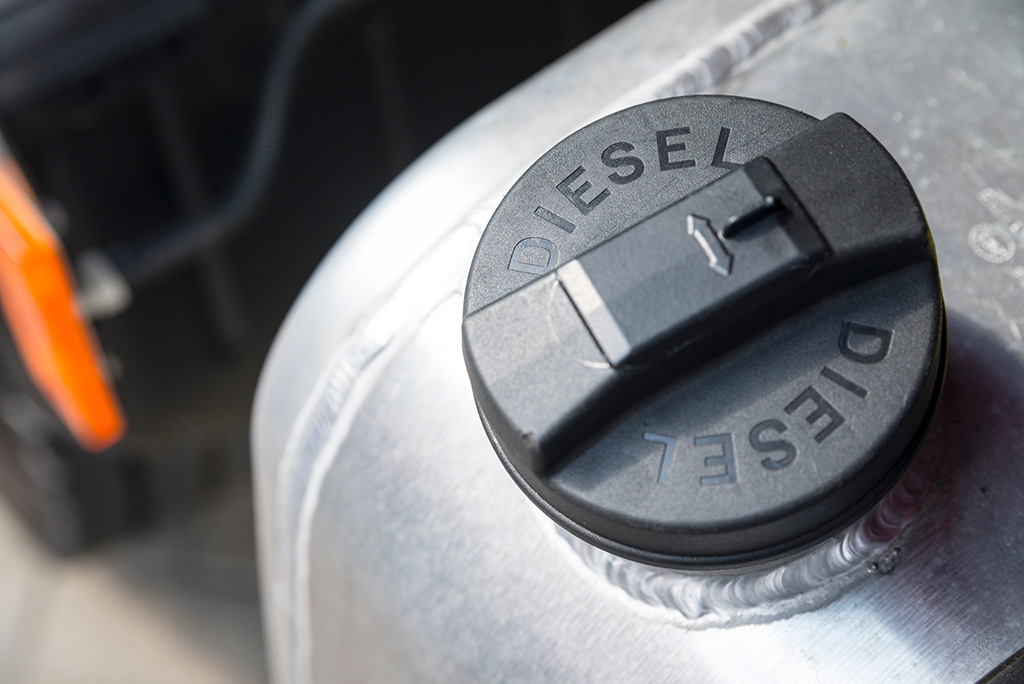A study funded by the Ministry of Labour, Training and Skills Development (MLTSD) has found unsafe levels of occupational exposure to diesel engine exhaust (DEE) at some Ontario construction sites.
Researchers suggest there is a need for greater worker protection and are calling on employers to take precautions to mitigate the hazard and implement measures to build awareness and prevention.
In the study, sampling equipment was attached to construction workers at seven civil infrastructure construction worksites and one trades training facility to collect elemental carbon measurements and give researchers a reading of workers’ daily personal exposures to diesel engine exhaust while on the job. They also collected samples of air from the breathing zones of workers.
Researchers found the samples exceeded recognized standards, as 41.6 per cent were above health-based limits established by the Dutch Expert Committee on Occupational Safety and 90.6 per cent were well above the recommendation of the Finnish Institute of Occupational Health.
“We were measuring what we call the personal exposures,” says Victoria Arrandale, a co-author of the study and an assistant professor at the University of Toronto. “We put samplers or sampling equipment on the lapel, like on the body of these workers, and they wore their equipment throughout their shift. We were trying to assess what their personal exposure would be during work.
“One of the key takeaways is that even though the levels that we measured were lower than we might see in a mining setting, they were higher than the levels at which there is a risk of disease or cancer, specifically. The levels we measured were at a level where we would consider them to be hazardous.”
The study, called Diesel Engine Exhaust Exposure in the Ontario Construction Industry, builds on previously conducted research that indicated exposure to DEE at levels lower than previously considered acceptable, can significantly contribute to the burden of cancer. Exposure to diesel exhaust is widespread in construction and other sectors given its reliance on diesel-powered equipment. Until now, few studies have delved deeply into the exposures in construction.
Study co-author Paul Demers, director of the Occupational Cancer Research Centre and a senior scientist with Ontario Health, says the research was done because studies have shown diesel exhaust is unhealthy and there’s a lot of evidence that it causes cancer, but most have focused on the mining sector.
“A group that we believed was understudied and perhaps the hazards of diesel were under-recognized in were construction workers that often work around very heavy equipment where controlling diesel exhaust is actually much more difficult in ways similar to mining except it’s not in a tunnel underground.”
Understanding the health effects of exposure to DEE, even at low levels, has advanced a lot in the last decade, says Demers, but there hasn’t been much good information specifically about the construction industry.
The exposure levels being seen in construction are substantially above safe levels, he says, especially in situations where work is being done below-grade because diesel fumes sink and build up.
“In those areas, particularly, there were areas that I would consider are high-risk areas and need to be addressed. Unfortunately, our regulations have not kept up with the changing science over time.”
Ontario presently has no occupational exposure limits for whole diesel exhaust or diesel particulate matter, other than in mining.
Before COVID-19 struck, the MLTSD did put out a proposed exposure limit for public consultation and received feedback but it has not been adopted.
The results of the most recent study are being reviewed, a ministry spokesperson says, and the MLTSD is considering adopting a new occupational exposure limit (OEL) for DEE in provincially-regulated workplaces. The problem is that OELs are primarily based on recommendations of the American Conference of Governmental Industrial Hygienists (ACGIH) and the agency does not have OELs for DEE in construction.
However, authors of the study maintain workers still need to be protected as evidence shows DEE does cause cancers.
“Just because there isn’t an occupational exposure limit doesn’t mean that employers don’t have a responsibility to take every reasonable precaution to protect the workers at their site,” says Arrandale. “We do know that diesel particulate matter, specifically, is a carcinogen. It is something that should be considered as part of occupational health and safety systems. Building awareness and improving prevention around diesel engine exhaust is really important.”
Demers says the regulation needs to be advanced although he admits that is a challenge as the ACGIH has no OEL standard.
“Any kind of regulation of diesel exhaust at least will raise more awareness of this as a hazard.”











Recent Comments
comments for this post are closed